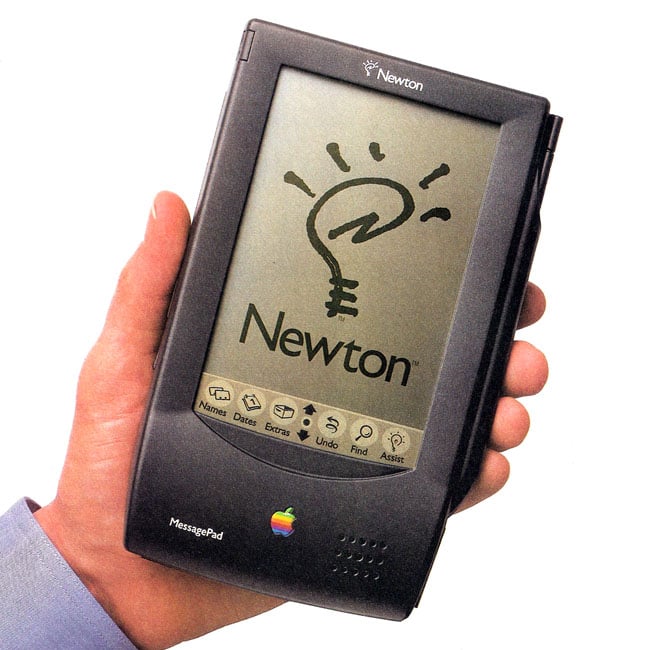 Apple Newton, Apple’s struggles summed up in one device. The Newton was a PDA (Personal Digital Assistant) that was released in the early 1990s. During this time, Steve Jobs quit and left his own company because of internal conflicts, and left the CEO at the time John Sculley in charge. The Jobsless Apple was starting to struggle and was “experimenting” with many ideas including digital cameras and video games, but nothing seem to stick. And one of these experiments was the Apple Newton. Now Apple’s PDA did not go mainstream and was swept under the rug for a reason.
Apple Newton, Apple’s struggles summed up in one device. The Newton was a PDA (Personal Digital Assistant) that was released in the early 1990s. During this time, Steve Jobs quit and left his own company because of internal conflicts, and left the CEO at the time John Sculley in charge. The Jobsless Apple was starting to struggle and was “experimenting” with many ideas including digital cameras and video games, but nothing seem to stick. And one of these experiments was the Apple Newton. Now Apple’s PDA did not go mainstream and was swept under the rug for a reason. Before that, It is time to talk about the development of the Newton. It was released in 1993 and was the first to have handwriting recognition. The Newton developed cycle was a smooth throughout, except towards the middle, for the company and their first time creating such a device. Apple was able to get a custom AISC chip with 163 mhz that was quite powerful for a portable device at the time and energy efficient. It ran the Dylan programming language code, but the language was not mature enough for applications to be successfully written and fleshed out. It costed $100 million to develop the Newton.
Before that, It is time to talk about the development of the Newton. It was released in 1993 and was the first to have handwriting recognition. The Newton developed cycle was a smooth throughout, except towards the middle, for the company and their first time creating such a device. Apple was able to get a custom AISC chip with 163 mhz that was quite powerful for a portable device at the time and energy efficient. It ran the Dylan programming language code, but the language was not mature enough for applications to be successfully written and fleshed out. It costed $100 million to develop the Newton.
The main attraction of the Newton was it’s handwriting and it was it’s also major flaw. The Newton was unable to recognize many handwritings most of the time. The price point was also hard to justify Newton over other PDAs. The Newton had a stylus which helped navigate the menu of the resistive touch screen. It weighted 1 1/2 lbs without the 2 AA batteries. And it rocked a full 8mb of ram.

The Newton was during the dark ages of Apple’s history which Apple was wandering aimlessly hoping something succeed. As soon as Jobs came back to Apple he discontinue many projects including the Newton in 1997. Steve Job hated the stylus so much that when he came up with the idea of having touch screen on the ipod and iphone he wanted to use multi-touch with figure, something that not a lot of device had at the time. So at least we have the Newton for that.
FUN FACT: The Apple Newton was used a lot in the medical field to access patent medical records
source:https://everymac.com/systems/apple/messagepad/stats/newton_mp_2100.html
https://en.wikipedia.org/wiki/Apple_Newton
Wow! That a very interesting and unexpected topic of discussion. I never would have thought this tremendous and powerful company has had such hardships throughout the years. Great post.
ReplyDeleteI never considered what the ipad’s precursor looked like. Also, thanks for explaining the history behind the touch screen. Thank God we were one of the first generations to have touch screen cell phones! (I can imagine what a bore cell-phones were without touch screens!) Nice post.
ReplyDeleteIt’s interesting to see how some of the larger corporations tried to innovate but ultimately failed. We always hear that a company should innovate to hold a competitive edge but sometimes that could backfire horribly. You should talk about another failed venture from Apple’s dark ages, the Pippin.
ReplyDelete